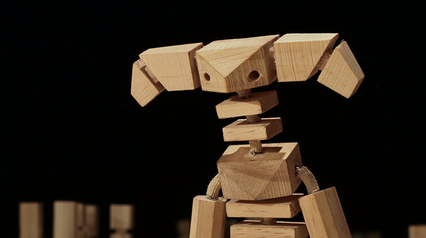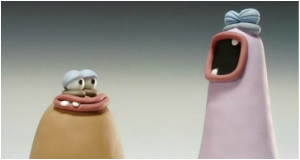Design tools and strategies for materials based animation
Level 2 Design Workshop Lecture notes and extra resources and information.
The visual presentation of ideas - How to communicate real world concerns.
In early pre-production, pre-visualisation of key aspects of the film is a critical concern, as is Design for functionality is an obvious early concern in the making of any animated sequence. In stop motion in particular it is critical that the puppet maker uses strategies which reduce the margin for error in making puppets, props and sets. The stop motion director will need to call on a wide range of technical expertise, such as mould-makers, carpenters, metal workers, pattern cutting and sewing experts etc. He or she will need to present fabrication tasks in a clear and professional manner. It is also critical that information be presented which illustrates conceptual decisions and leaves any consultant maker in no doubt as to the overall look and feel of the piece.
The following words could be employed in various combinations to describe the visual look of a stop motion narrative. The combination chosen will depend on a number of key concerns
1) The intended Audience and destination of the final film.
2) The Message/Narrative being communicated
3) The skill, limitations and personal aesthetic of the Maker/director
4) The overall budget and range of tools, equipment and materials available.
If we take one visual element as a case study - (in this case colour palette) the stop motion designer and fabricator needs to consider this in the context of the list above to identify practical considerations, and the list below, to identify and prioritise conceptual and aesthetic considerations.
Colour - Saturation - Hue - Tint - Shade - Wash - Blush - value - Tone - Pastel - inks - paints - air brushed -
Surface - Texture - Rendered - Matt - Gloss - Washed - Sponged - Sanded back - Distressed -
Light - Diffused - Hard - soft - Staged - Ambient - indoor - outdoor - Warm - cool - High Contrast -
Materials - Soft - Translucent - reflective - Dry - Wet - Glossy - Rigid - flexible - Brittle - Aged - Clean -
It is clear that a set of documents, drawings and viability tests are required to fully identify and exploit desirable considerations.
Concept Art in the form of drawings and general research will begin to communicate these decisions, but a more formal presentation of a broader range of material material is essential to really inform others of the visual look, tone and feel of the piece in pre-production.
The following words could be employed in various combinations to describe the visual look of a stop motion narrative. The combination chosen will depend on a number of key concerns
1) The intended Audience and destination of the final film.
2) The Message/Narrative being communicated
3) The skill, limitations and personal aesthetic of the Maker/director
4) The overall budget and range of tools, equipment and materials available.
If we take one visual element as a case study - (in this case colour palette) the stop motion designer and fabricator needs to consider this in the context of the list above to identify practical considerations, and the list below, to identify and prioritise conceptual and aesthetic considerations.
Colour - Saturation - Hue - Tint - Shade - Wash - Blush - value - Tone - Pastel - inks - paints - air brushed -
Surface - Texture - Rendered - Matt - Gloss - Washed - Sponged - Sanded back - Distressed -
Light - Diffused - Hard - soft - Staged - Ambient - indoor - outdoor - Warm - cool - High Contrast -
Materials - Soft - Translucent - reflective - Dry - Wet - Glossy - Rigid - flexible - Brittle - Aged - Clean -
It is clear that a set of documents, drawings and viability tests are required to fully identify and exploit desirable considerations.
Concept Art in the form of drawings and general research will begin to communicate these decisions, but a more formal presentation of a broader range of material material is essential to really inform others of the visual look, tone and feel of the piece in pre-production.



